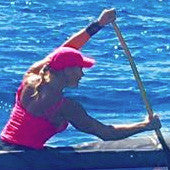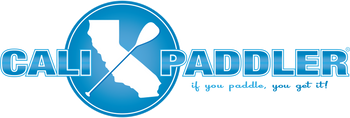 Off-season is an important time for paddlers to work on their weaknesses, whether it be strength, form, and injury prevention. This will prepare you for a more successful upcoming race year.
Off-season is an important time for paddlers to work on their weaknesses, whether it be strength, form, and injury prevention. This will prepare you for a more successful upcoming race year.
A certain amount of resting at the very end of the race year gives you a good balance and a positive mental state to prevent burnout. Things gear up pretty quickly at the beginning of the season so you want to maintain a certain amount of fitness on your time off.
Off season the focus should be on building strength and aerobic base. Athletes must always keep in mind that once the body has hit its peak, it can only stay up there for a short time before it begins to crumble. In other words, one can only hold a peak for so long, so timing in your training is important.
How do you build aerobic strength? Volume, with appropriate amount and type of intensity. Volume should be comprised of quality mileage based on what the individual athlete can handle. Quality mileage refers to mileage which the athlete can handle without going so slow that it becomes 'junk mileage,' and without suffering from too much technical deterioration. This is roughly 80-90% of max heart rate and “junk mileage” or recovery pace is at no less than 60-70%. It is important that you train ALL systems, so you can dial in what your % are for your different rates. Don't completely ignore higher heart rates and intensity just because you are in the off-season and are training to expand your aerobic base – just be careful with the type and frequency of intensity in the training program. It is important time to heal any injuries and restore bilateral symmetry from muscle imbalances caused by a dominant sided competitive sport. (Bilateral symmetry means that the dominant and non-dominant sides of the body are fairly symmetrical).
If you can fix these asymmetries, you can prevent many injuries. The human body was never designed for competitive sport that heavily favors one side of the body over another. Focusing on your weak areas is critical for setting you up for the next season. It’s a great time to work on your bad habits, improve movement patterns while still developing muscle strength and aerobic capacity.
Although the body's biology and scientific processes are largely measurable and predictable, there are a great number of variables that affect training from person to person, and can even influence the same person differently in varying circumstances. Two people who have different genetic makeup and predisposition, or who have a different training background might respond to the same exact training program and workouts differently.
As an athlete, you must be conscious of these differences and make a training program that is not rigid, with some room for variances.
People often ask me to write a fixed training plan for an entire season, or training cycle. This is extremely difficult without knowing all the specifics about the athlete, their goals, or how they will respond to specific training. I often see generic training programs published and used by the masses to prepare for the next season. This can produce a problem, because a lot of these athletes are at different levels of experience in the sport, different volumes of training, and their skill level / fitness level in the sport can be completely different.
There are necessary developmental physiological steps that must be understood, and cannot be rushed. The more training one does, the more the body adapts and becomes stronger.
It is important to avoid burnout in your sport. For every Martina Navratilova story of the 6 year old who dedicated her young life to sport and became great, there are thousands of other young girls and boys who spend a few years completely dedicated to their sport only to give up on it when burnout sets in.
The difference is due to the time and energy required to make substantial changes in your motor pattern, muscle size, muscle strength, aerobic base, speed, and other factors. There are simply not enough hours in the day to improve all of these critical factors while also practicing and playing a competitive sport.
Your strength program during season is typically a maintenance program. It is lower in volume, often lower in intensity, and lower in frequency, to accommodate for the extra time and energy for practice and races.
For paddlers, off-season weight-training should work on restoring the strength in the pulling muscles, the shoulders external rotators, lower back plus muscles of the posterior chain, (hamstrings and glutes) core muscles and to restore scapular function. Here are some good off season exercises to incorporate to your workout.
Pull Ups
Focus on pinching your shoulder blades together, and keep your entire body tight. A pull-up is a compound exercise which works a large number of muscles in your back, shoulders, and arms at the same time. Use different grips (wide, narrow, middle) to work different areas of your back.
Squats/ Back / Front/ TRX Single Leg
Traditional back squats are done with a squat bar behind the neck sitting on transverse part of the traps, across the shoulders.
One Leg TRX Squat
Front squats are done with the bar across the shoulders, elbows high but under the chin. This keeps your core straight and more engaged.
Trap Bar Dead Lifts/ Deadlifts
Deadlifts
In regular dead lifts, you can cheat and can roll the back forward. Try to keep your head up, bottom down and lift your chest while driving your heels into the ground.
Trap Bar
Trap Bar Deads
A trap bar is the diamond-shaped bar, because the load is in line with the spine and with the body. This keeps your spine straight, protects your back, and forces you to lift with your core.
Shoulder Plate Rotations

Pick up a plate and rotate it in circles over and around your head. This is supplemental joint work to prevent injury by building stabilizing muscles.
Abdominal Roll Outs

While kneeled on a mat, the two-handled wheel. Holding the wheel out in front of you, stretch your torso to the floor — then bring it back up only half way. Make sure your hips stay down and that you don’t pull with your arms.
Landmines / Russian Twists w DB
Landmines
LM - With landmines I like to try to keep my arms straight to use my abdominals more , I also rotate my body while I rotate the weight and touch my thigh with the plate. I don’t use rubber plates because I can’t go down as far on my leg and I limit the amount of muscle I can engage. I then lock down my abs to move the weight to the other side.
Russian Twists

RT- Starting from the inverted C position, look backwards. Hold a weight and rotate your torso back and forth bringing the opposite elbow over the other knee. Since we rotate in the boat, we have to be able to tie that rotation into our core and work the obliques, which help support the rotation of each stroke.
Dead Bugs/ Both Hands and Feet/ Alternating

Lying on your back, keep your vision looking back behind you and keep your arms and head as one.
Hip flexibility and spine stability ensures the hinge between the legs and body. This exercise helps to support and translate the power output of the lower body into the paddle.
Rotating Planks

This core strengthening exercise is good for many different abdominals. You want to do rotating planks and increase strength so that eventually you are not pausing in between sides and just rotating back and forth with just your core.
Planks on the Yoga Ball
Place elbows directly below the the shoulders, not behind. Keep your hips low, upper back flat and head looking forward. Push your fists into the ball the entire time. As you get better you can push the ball away from you back and forth.
With at least 3 months left before the season starts this can be a great time to kick start that fitness plan so your next year can build upon your recent success.
 Team Writer Shannon Hartnett - Shannon Hartnett has been a fitness trainer for over 20 years. She graduated from college in the fitness industry at Cal Poly SLO and at Sonoma State. Shannon also competed in basketball and track and field in college. Shannon was a professional athlete for 22 years and has spent a lot of time at the different Olympic Training Centers. Shannon has many specialized training certificates such as rehabilitation certification, kettle bells, TRX, MOR Bar and a Yoga instructor
Team Writer Shannon Hartnett - Shannon Hartnett has been a fitness trainer for over 20 years. She graduated from college in the fitness industry at Cal Poly SLO and at Sonoma State. Shannon also competed in basketball and track and field in college. Shannon was a professional athlete for 22 years and has spent a lot of time at the different Olympic Training Centers. Shannon has many specialized training certificates such as rehabilitation certification, kettle bells, TRX, MOR Bar and a Yoga instructor
In the last several years, Shannon began paddling, including Outrigger Canoe, and has raced throughout California and in Hawaii. Visit her website http://www.shanimalfitness.com for a chance to learn more about her fitness and nutrition business and talk paddling!
















Kate Wilcox-Bowman - February 26, 2018
Great article Shannon! Thank you for laying out an off season plan.